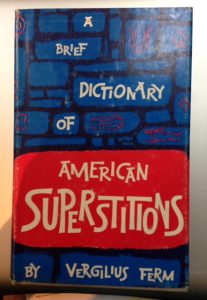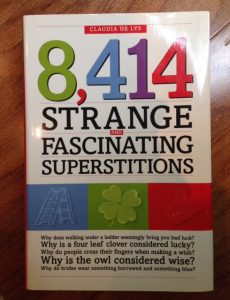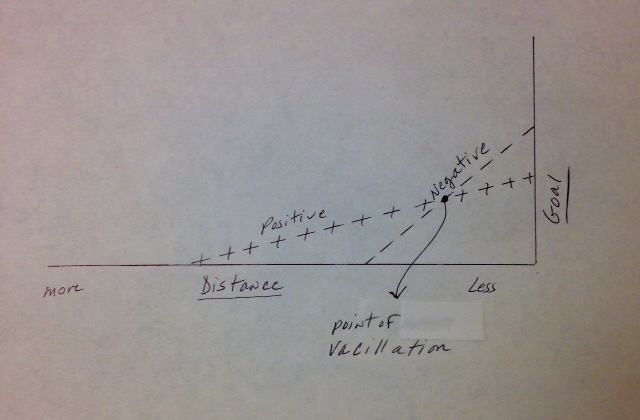
I’m honored to be interviewed on Fiona Quinn’s Thrill Writing, a blog helping thriller writers write it right.
We talk about why a character might act “out of character,” group mentality, behavior matching, why people might be more passive in groups or more likely to riot, and more.
In this article, we’re talking about what happens to a character when they get into a group where a character might act “out of character”, which is a fun way to develop the plot.
Can you first give us a working definition for “group”
Vivian – We usually think three or more, but some “group” effects are present even with only two. Also, the “group” needn’t be physically present to exert influence.
Fiona – Can you explain that last sentence?
Vivian – Some group memberships are literal memberships–for example, a church congregation, sorority, bridge club, etc. such groups are often in our thoughts, and serve as a reference or standard for behavior even when the member is alone.
Fiona – Does “group mentality” work both ways? For example, people in a riot become riotous, but people in a disaster, where they see all hands on deck, become heroes?
People in a religious forum feel more religious. . .sort of like a magnifier?
Vivian – Absolutely. I just mentioned formal groups–which are the ones having the strongest influence at a distance– but crowds, mobs, any physical gathering of people, shapes our behavior to act or remain passive.
Fiona – Can you give us a short tutorial on what we need to know about group dynamics to help write our characters right?
Vivian – Well, there is a phenomenon known as behavior matching, a tendency to do what others around us are doing. This is reflected in everything from eating to body language. Even a person who has eaten his or her fill will eat more if someone else comes in and starts eating. If others are slouching, your character isn’t likely to remain formal.
Fiona – Yes, it’s hard to pass up a piece of chocolate cake when everyone else is moaning about how delicious it tastes.
Just sayin’
Vivian – A related phenomenon–I suppose it could be a subset of behavior matching– has the label diffusion of responsibility. This is the tendency for people to stand passively by when others are present. There was a classic case, decades ago, in which a NYC woman named Kitty Genovese was murdered in the courtyard of her apartment. The murder took approximately half an hour, and dozens of her neighbors watched from their windows. No one came to help or even called the police. The more people who could help, the less likely anyone will take responsibility for doing so.
And then there is group disinhibition. This is sort of the opposite. It is that people are more likely to take risks, break the law, be violent when others are doing so. Think looting, or harassing a homeless person. Disinhibition is even more powerful when alcohol is involved. I recently posted a blog on alcohol for writers that goes into that a bit.
But the bottom line is that we behave differently with others present than when alone.
Thank you, Fiona!

According to Gallup polls, over half of Americans say they are at least a little superstitious. Consider the value of superstition for your character(s).

People who are truly not superstitious are nevertheless well aware of what’s associated with Friday the 13th, black cats, broken mirrors, four-leaf clovers, etc. Such people might well make a wish with fingers crossed, or when tossing a coin into a fountain or other water, when blowing out birthday candles, or kissing a horseshoe. If you don’t consider yourself superstitious, you may engage in superstitious thinking or behavior nevertheless, without paying attention—an habitual or non-conscious action. For me, that’s knocking on wood.

This collection by Claudia De Lys has an excellent two-page description of this and other wood superstitions, ranging from the balsam needle pillows to wooden rosary beads, traced back to the spirits believed to live in trees that bring on the seasonal changes (life, death, and resurrection) or maintain the evergreen state (immortality). A tree or wood was touched when asking favors and again in appreciation of good fortune received.

Diana Gabaldon’s work is an excellent example of effectively using her characters’ beliefs, superstitions, and ritual acts—everything from beliefs about witches and fairies to making the sign of the cross—to illuminate both the characters and the historical context.
Stuart Vyse, Ph.D., author of Believing in Magic: The Psychology of Superstition, is an authority on magical thinking. He differentiates superstition from obsessive-compulsive behavior or other mental disorders and religious ritual, and discusses the functions each serves. I’ll stick with superstition for the sake of (relative) brevity.
Anything as nearly universal across time and cultures as superstition must serve some beneficial function! In a 2010 paper by Damisch, Stroberock, and Mussweiler, “Keep Your Fingers Crossed! How Superstition Improves Performance,” the researchers argue that superstitions give people a sense of control in chaotic situations. The major outcome of this research was that people who were allowed to solve problems with their lucky charms at hand performed better than when those charms were absent.
But the important point is that it is performance based. So wearing mismatched socks when playing baseball or tennis—or mah jongg jewelry when deep into that game—might improve performance.
But lucky charms have no impact on outcome when the results are due to chance. So skip the lucky dice—unless you just like the look.
These researchers point out the ways in which this phenomenon may be wide-spread and important, for example in alcoholism. Many if not most members of AA attribute their abstinence to the higher power in their lives giving them strength. If they believe, they are more likely to stay sober.

Some people are more superstitious than others—athletes and actors are notoriously so—and superstitions run in families. One example is a Virginia friend who says, “Rabbit, rabbit, rabbit,” first thing in the morning on the first day of each month to ensure a good month. Her daughter in Texas does the same thing. And now they text each other to see who says it first!
And, incidentally, women are more superstitious than men. Vyse relates this to locus of control. People who have an internal locus of control (I am master of my fate) are less superstitious than those with an external locus of control (life happens to me). Compared to men, women still feel that they have less control in their own lives. So maybe they wear special earrings for dominoes, euchre, and bridge for a reason!
Vyse also makes a connection between performance improvements and effort. He says that lucky charms don’t significantly reduce anxiety, but they do increase persistence. So maybe that’s what’s going on with a friend who happens to be a lapsed Catholic. When she loses something, she still says what she calls “the kid’s version of the prayer to St. Anthony”: Tony, Tony, come around. Something’s lost and must be found. She swears it works.
Truly magical thinking is taking an action that has no logical way to affect the outcome but may bring comfort anyway. A third friend who grew up in a Navy family won’t watch people leave because that means they won’t come back. She attributes this to her life on base, when families would see their husbands/fathers off at the dock but turn away as soon as the ship was underway.
When pressed, many non-superstitious people will admit that they prefer not to walk under ladders, step on graves, or open umbrellas indoors. They prefer to leave a building by the same door through which they entered, and they want to round an object in the path on the same side as their companion. Do you always include money when you give a purse or wallet? Does the recipient of a gift knife have to “pay” the giver at least a penny? Superstitions are everywhere, everyday, not just on Friday the 13th!
Give your characters superstitions and/or rituals. It can add interest, tell something about the person’s ethnic or family background, and illustrate her/his anxieties and feelings of control.
I’ve mentioned here and there that I collect things: dictionaries, carved wooden Santas, napkin rings, funky earrings, and mah jongg sets, among other things.
I’m not alone here. Indeed, I’m not not even close to making it into the The Mammoth Book of Weird Records.
There are people out there collecting


Think about the sort of person who might collect these things. And why. Who is comforted by plenty? Who wants to be distinctive, not one of the masses? Who sees it as a mark of economic superiority? Or maybe there’s a family competition going on.
Are you a collector? What and why?
The basis of conflict and tension are obvious when two (or more) characters are competing for the same goal, such as a promotion, or when a character is beset by physical danger such as a life-threatening cancer or an approaching hurricane. A threat of any sort to the character or to someone (or something) the character cares about is an excellent source of conflict and tension. But using internal conflicts can add just as much power to your plot.
The character has multiple appealing options but can take only one—e.g., two marriage proposals, only one dessert from a tray of twelve, only one new car, etc. This type of conflict creates the least tension because there is no real downside. It’s all good.

Will the character get back surgery or live with the pain? Wash the car or rake leaves? Stay in an unhappy marriage or get a divorce? The reader may feel more sympathy than tension. The level of tension depends partly on the pain the character suffers while weighing the alternatives, and partly on how bad the options are. For example, Sophie’s Choice: to save herself and one child at the price of choosing to send one child to the gas chamber, or refuse to choose and sentence all three of them to death.
Virtually all relationships as well as many other aspects of life fall into this category. One factor affecting the amount of conflict or tension is how nearly the positive and negative aspects are matched (the closer they are in strength, the greater the tension). If an otherwise perfect spouse has one annoying habit, probably no big deal, the marriage is solid; if a buyer is drawn to a white picket fence but the house is practically falling down and overpriced, no-sale is a pretty safe bet. But if a deeply flawed spouse has nearly as many annoying habits as good ones—if the house is in a perfect location with a great school district and enough yard for the seven dogs—it could be a game changer. Comparable positives and negatives will create lots of tension.
A second factor is how important the ultimate outcome is. If I want a Ph.D. to qualify for a college professorship but don’t want to spend the time, effort, and money to go for it—not to mention the risk of failure—big decision, lots of tension potential. If I want a bag of chips from the vending machine but think $2 is an outrageous price—not much tension.
The positive (which pulls the character to approach) and the negative (which pushes the character to avoid) are what psychologists call “valences.” Both diminish with distance—time, physical distance, space. Something far away will affect the character’s immediate behavior and feelings less than something that is imminent.
Love is always a high-voltage relationship, so let’s consider the special instances of approach-avoidance conflicts reflected in absence makes the heart grow fonder; out of sight, out of mind; and can’t live with ’em, can’t live without ’em.
Absence makes the heart go fonder when, with distance, the negative qualities or aspects of the date/lover/spouse exert less influence and the push-away diminishes; the person doesn’t seem so bad. If you aren’t actually hearing the obnoxious laugh, smelling the bad breath, or arguing about politics, the heart grows fonder—though maybe not fond enough to renew the relationship.
Out of sight, out of mind is the opposite: positive value diminishes with distance until the original attraction may have no more pull at all. The sweet kisses don’t mean so much when you aren’t getting any! Ditto sense of humor, help with chores, being a good listener. This is often the source of the “Dear John” letters received by people in the military, in prison, in college far away, etc.
In terms of conflict and tension, can’t live with ’em and can’t live without ’em is the best. One brief detour into psychology: negative valence declines more sharply than positive valence. Soooo, when both valences are significant, the case sometimes evolves in which the sharp decline in the negative crosses the slower decline in the positive valence.

The point where the valences cross is the point of vacillation: closer, and the relationship is so negative that one or both parties withdraw. With greater distance, the positive stays strong longer than the negative and the couple gets back together. These yo-yo relationships can go on for years. This could happen with any type of relationship—playmates to spouses. Whole books have been written by and about couples who marry, divorce, and remarry.
Good writers need to be good psychologists whether or not they ever studied the discipline or use the lingo, just be sure the positives and the negatives are believable for the character and appropriate to the conflict.
Characters in conflict within themselves can provide plenty of page-turner tension!
Writing Relationships: Why Not Get the Hell Out of Dodge?
Writers Need Toxic Relationships
The Principle of Least Interest
Why Women Have Sex: Character Motivation Matters
Rational and Irrational Behavior in Your Characters: Guest Post on Thrill Writers